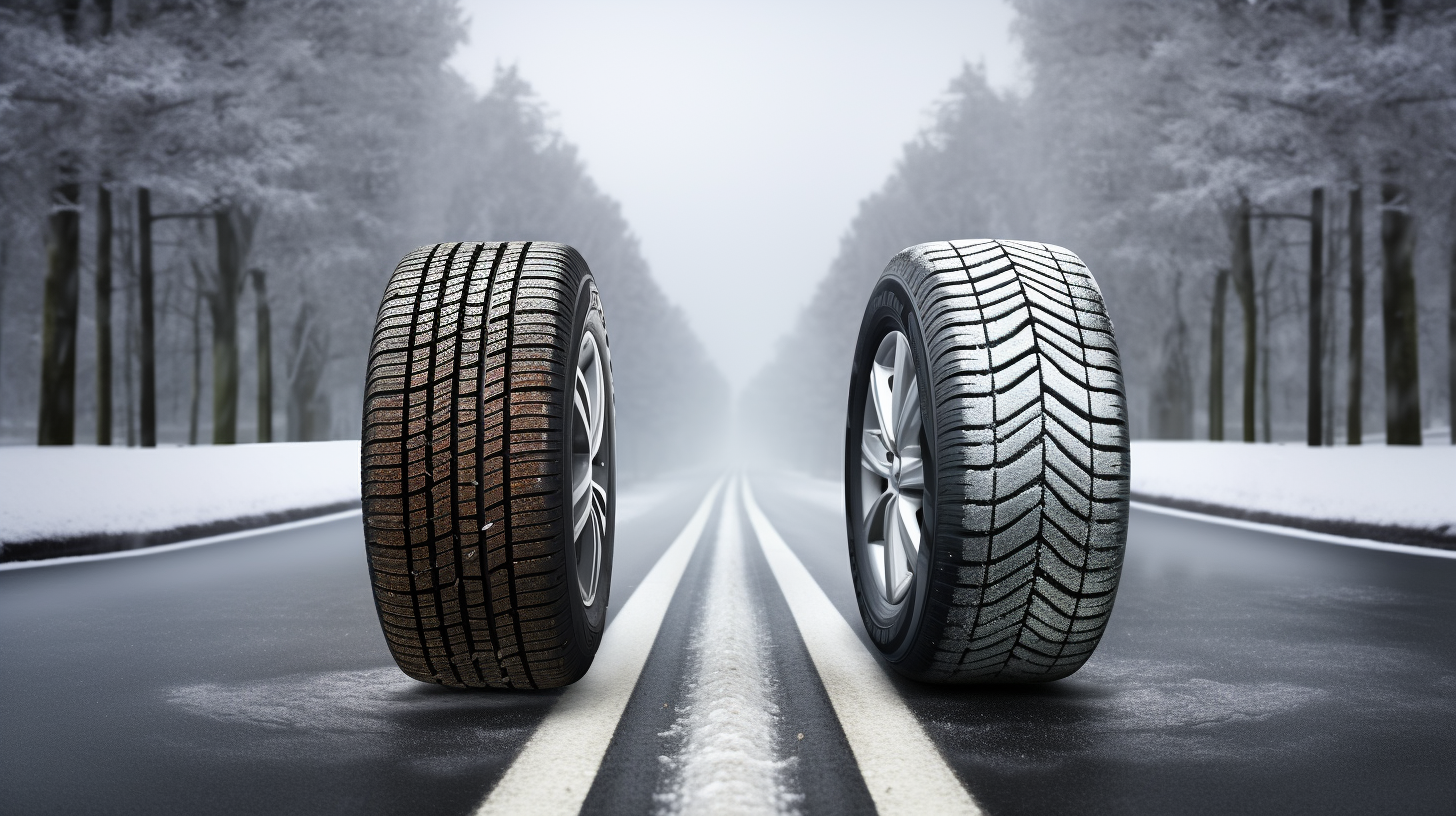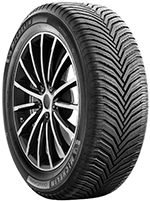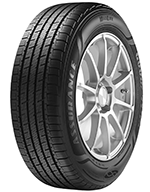Tire Showdown: Michelin Crossclimate 2 vs Goodyear Assurance Weatherready – Which Reigns Supreme?
Choosing the right all-season tire is a battle of performance and reliability. In our ring, the Michelin Crossclimate 2 faces off against the Goodyear Assurance Weatherready. We’ve put them through the wringer in every condition imaginable – rain-soaked streets, unforgiving snow, and the heat of summer. Discover which tire emerges victorious for the ultimate year-round driving confidence.
You’re on the hunt for the perfect all-season tire, and you’ve got it down to two: Michelin CrossClimate 2 and Goodyear Assurance WeatherReady.
But which one’s the best? You’re about to dive into a detailed comparison, assessing everything from tread design to grip, handling, and performance on diverse road conditions.
Let’s figure out which tire truly fits your needs. Buckle up, it’s time to delve into the Michelin CrossClimate 2 vs Goodyear Assurance WeatherReady showdown.
Table of Contents
Sizes Facts
When it comes to the size specifics of these tires, you’ll notice some key differences between the Michelin Crossclimate 2 and the Goodyear Assurance WeatherReady. The Michelin Crossclimate 2 caters to larger rims, with sizes ranging from 16 to 22 inches. On the other hand, the Goodyear Assurance WeatherReady covers a smaller range, offering sizes for 15 to 20-inch rims.
Diving a little deeper into the specifications, the speed ratings also vary. The Michelin Crossclimate 2 offers options with H and V speed ratings. In contrast, the Goodyear Assurance WeatherReady provides more versatility with T, H, and V speed ratings. This essentially means that the Goodyear tires can accommodate a broader spectrum of speed requirements.
The tread depth is another area where these two differ. The Michelin’s tread depth range is a consistent 10.5/32” across all sizes. However, Goodyear offers two options. You can either opt for a tread depth of 10/32′ or go for slightly more depth at 11/32′.
When it comes to load ratings, both brands offer SL and XL. But, the weight range is where you’ll see a clear distinction. The Michelin’s weight range is 25 to 36.5 lbs, whereas Goodyear ranges from 19 to 37 lbs. This means the Goodyear Assurance WeatherReady can accommodate lighter vehicles compared to the Michelin Crossclimate 2.
In terms of winter ratings, both brands have M+S/3PMSF available, indicating their capability to handle snowy conditions. However, the UTQG ratings (which measure treadwear, traction, and temperature resistance) are higher for Goodyear, suggesting a longer lifespan.
Tread Appearance
In terms of tread appearance, you’ll notice significant differences between the Michelin Crossclimate 2 and the Goodyear Assurance Weatherready.
The Crossclimate 2 showcases a unique, directional tread pattern with V-shaped lugs. These lugs, separated by longitudinal slits, are highly effective in displacing water, slush, and snow, contributing to the tire’s 3-peak mountain snowflake rating. The central area is fitted with densely packed lugs, featuring an interlocking siping structure and snow vices, providing excellent dry grip and enhanced winter traction. The shoulders, on the other hand, feature more lateral gaps and are equipped with rectilinear siping slits.
The Goodyear Assurance Weatherready, however, presents an asymmetric tread design, offering more biting edges. It features three distinct ribs at the center, forming four longitudinal channels of nearly equal widths. The centralmost rib displays sharp offset edges, notches, and in-groove lateral tread voids, enhanced with a mix of rectilinear and interlocking sipes for improved stability. The adjacent ribs showcase aggressive lug formations, one with zig-zag edges, chamfered sides, and interlocking sipes, while the other features sharp, highly angled tread voids. The shoulder blocks are relatively less aggressive, fitted with interconnected longitudinal and lateral rectilinear sipes and connectors in the smaller tread voids.
These differences in tread appearance not only contribute to each tire’s distinctive look but also significantly impact their performance under various driving conditions. Therefore, understanding these differences is crucial when choosing between the Michelin Crossclimate 2 and the Goodyear Assurance Weatherready.
Grip and Handling
Understanding each tire’s unique tread design, you’ll now appreciate how it impacts its grip and handling characteristics. Specifically, the Michelin Crossclimate 2’s densely arranged lugs in the central area improve grip on the road surface, resulting in shorter braking distances. This is because most of the tire’s weight is concentrated in the middle part of the tread when the tire rolls straight, making the connection of the lugs with the road crucial for directional grip.
Moreover, the Michelin Crossclimate 2, with its rounded contact patch, offers better handling than the Goodyear Assurance WeatherReady, providing a more balanced under and oversteering experience. However, the difference in handling between the two is only marginal, as indicated by their similar speed ratings. Here are some key points to note:
- The central lugs of the Michelin Crossclimate 2 enhance grip, decreasing braking distances.
- The weight distribution of a rolling tire makes the central lugs vital for directional grip.
- The rounded contact patch of the Michelin Crossclimate 2 improves handling.
- Both tires offer similar handling, reflected in their comparable speed ratings.
- The Michelin Crossclimate 2 and Goodyear Assurance WeatherReady perform differently under wet conditions.
Wet Traction
Often, you’ll find that the performance of a tire in wet conditions is a critical factor in your purchasing decision, and both the Michelin Crossclimate 2 and the Goodyear Assurance WeatherReady offer unique advantages in this regard.
The Goodyear Assurance WeatherReady stands out due to its combination of siping, notches, and chamfered edges. These elements work together to maintain a strong grip on wet roads. The biters, or sipes, provide small tread voids to temporarily store water, allowing the tread to meet the road effectively. The added flexibility of the tread accommodates for the stiffness that can occur during cornering and braking.
In contrast, the Michelin Crossclimate 2 falls short with its minimal siping. While there’s enough in the central area to provide adequate wet braking, the shoulder area is deficient, resulting in less effective handling compared to the Goodyear Assurance WeatherReady.
However, the CrossClimate 2 regains ground with its superior hydroplaning resistance, a critical aspect of wet performance. Its directional design facilitates faster water evacuation, setting it ahead of the Assurance WeatherReady in this area.
Winter Performance
Switching gears to winter performance, you’ll find that the Michelin Crossclimate 2 really stands out, especially when compared to the Goodyear Assurance WeatherReady. Handling snow and slush like a pro, the Michelin Crossclimate 2 achieves superior traction due to its elongated lugs acting as snow shovels, leaving the Goodyear model trailing in its wake.
Despite both tires holding the 3 Peak Mountain Snowflake (3PMSF) rating, this designation doesn’t fully encompass the handling or braking effectiveness. It merely suggests that the tire outperforms non-3PMSF-rated all-season tires by approximately 10% in terms of acceleration.
In addition to this, other features set the Michelin Crossclimate 2 apart:
- Its directional design enhances winter performance.
- A narrower section width increases pressure on snow particles.
- The ability to create effective snow-to-snow contact enhances grip as snow sticks better to other snowflakes than rubber.
- The thermally adaptive rubber compound keeps the tire flexible even in harsh winter temperatures.
- Despite its impressive dry performance, it truly shines in winter conditions.
These factors combined with the tire’s design and construction allow the Michelin Crossclimate 2 to effectively navigate winter terrains, providing superior performance over its Goodyear counterpart.
Feel of Ride
Moving on to the feel of the ride, you’ll notice a distinct difference between the Michelin Crossclimate 2 and the Goodyear Assurance WeatherReady in terms of comfort.
The Michelin Crossclimate 2 has been designed with winter conditions firmly in mind, paving the way for an overall impressive performance regardless of the weather.
The Michelin Crossclimate 2 is renowned for its smooth ride. It’s designed with a unique tread pattern that not only enhances traction but also significantly reduces road noise. This is a critical factor when considering ride comfort. The tire’s noise levels are low, making for a much quieter ride, which can indeed enhance your overall driving experience.
On the other hand, the Goodyear Assurance WeatherReady, while still offering a decent ride, doesn’t quite match up to the Michelin in terms of noise reduction. You may notice a bit more road noise, especially on rougher surfaces or at higher speeds. Yet, it does score highly when it comes to absorbing road bumps. The Assurance WeatherReady uses a specially designed tread compound that helps it to absorb shocks, providing a smoother ride over bumpy or uneven pavement.
But, if you’re looking for the most comfortable ride, you might lean more towards the Michelin Crossclimate 2. However, if your routes frequently include rougher roads, the shock absorption of the Goodyear Assurance WeatherReady could be a deciding factor.
Tread Noise
As you zero in on the tread noise, you’ll find that both the Michelin Crossclimate 2 and the Goodyear Assurance WeatherReady have unique features designed to keep the noise down. These tires use innovative methods to control in-groove resonance, the reverberation of air within the tire tread, similar to echoes in a concert hall.
The Goodyear Assurance WeatherReady employs:
- Blockers between the shoulder lugs to limit air entry
- Pitch sequencing, which varies the tread block geometry to create canceling sound waves
- Absorbent tread walls that minimize sound reflection
Michelin CrossClimate 2, on the other hand, boasts a:
- Streamlined directional pattern that directs airflow smoothly through the tread
- Rounded contact patch that further reduces noise
Both tires employ strategies to prevent air from bouncing around within the tire and creating noise. The Goodyear Assurance WeatherReady uses blockers and pitch sequencing to control the amount and movement of air within the tire. The air that does enter is quickly silenced by the absorbent tread walls.
In contrast, the Michelin CrossClimate 2’s design prevents air from entering the tire in the first place. Its streamlined pattern guides air smoothly from one end of the tread to the other, avoiding noise-causing turbulence. Further, its rounded contact patch reduces the amount of tire surface in contact with the road, thus lessening the noise.
On-Road Vibrations
When it comes to on-road vibrations, you’ll find that your tire choice can significantly impact your driving comfort. Two of the top contenders in this area are the Michelin CrossClimate 2 and the Goodyear Assurance WeatherReady.
The Michelin CrossClimate 2, designed with a softer tread rubber and a softer inner cap ply, excels in reducing on-road vibrations. The high silica composition of its tread rubber allows it to absorb shock effectively, thereby minimizing the bumps and jolts you feel while driving. This softer compound ensures that the tire molds itself to the irregularities of the road, providing a smoother and more comfortable ride.
On the other side, the Goodyear Assurance WeatherReady uses a stiffer rubber top layer. While this design choice does extend the tire’s tread life, it comes with a slight trade-off in comfort. The stiffer top layer doesn’t cushion road imperfections as well as the softer compound of the CrossClimate 2. Additionally, Goodyear’s internal polyester casing, though flexible, doesn’t contribute as much to shock absorption.
In comparison, the CrossClimate 2’s softer inner cap ply plays a significant role in dampening road vibrations. This component acts as a buffer, absorbing the harshness of the road and leading to less transmitted vibration.
Tread Life
You’ll want to consider tread life when deciding between the Michelin CrossClimate 2 and the Goodyear Assurance WeatherReady. Tread life directly impacts the longevity of your tires and, subsequently, the overall cost of maintenance. It’s determined by factors such as structural design, tread pattern, and rubber composition, and these factors vary significantly between the two models.
The Goodyear Assurance WeatherReady uses a stiffer rubber top layer. This design choice is inherently geared towards durability and extended tread life. It’s built to withstand the test of time and maintain its grip over a longer period, potentially saving you from frequent tire replacements.
Contrarily, the Michelin CrossClimate 2, while offering a smoother ride, may not promise the same longevity due to its softer tread rubber. This softer composition, though beneficial for comfort and handling, could lead to faster tread wear.
Consider these key points:
- The structural design of Goodyear Assurance WeatherReady supports a longer tread life.
- The stiffer rubber top layer used in Goodyear tires adds to their durability.
- The softer tread rubber in Michelin CrossClimate 2 may result in a smoother ride but potentially shorter tread life.
- Frequent tire replacements can be costly and time-consuming.
- A longer tread life could mean significant savings in the long run.
Fuel Consumption
Switching gears from tread life, let’s now consider another key factor in your tire choice – fuel consumption. When it comes to this aspect, both the Michelin Crossclimate 2 and the Goodyear Assurance WeatherReady show high rolling resistance values, which essentially means that neither tire is particularly fuel-efficient.
However, in comparative testing, the Assurance WeatherReady pulls slightly ahead. This marginal improvement in fuel consumption can be attributed to its stiffer rubber compound, which reduces road friction. This stiffness limits the flexing and bending of the lugs – the protrusions on the tire that contact and grip the road. When lugs flex and bend excessively, more energy is required to keep the tire rolling, thus increasing fuel consumption. By maintaining a stiffer structure, the Assurance WeatherReady manages to minimize this energy expenditure slightly.
Conversely, the CrossClimate 2, with its softer rubber compound, tends to exhibit more flexibility. While this can have its advantages in terms of grip and comfort, it does mean that the tire demands more energy to maintain momentum, leading to increased fuel consumption.
Are Goodyear Assurance WeatherReady tires good in snow?
When it comes to handling snowy conditions, you’ll find that Goodyear Assurance WeatherReady tires deliver impressive performance. These tires meet the industry’s severe snow service requirements and are branded with the three-peak mountain snowflake (3PMSF) symbol, which means they’ve passed rigorous testing for traction on snow and ice.
The Assurance WeatherReady tires have been engineered with a special tread design to give you superior grip and handling in challenging winter conditions. Wide grooves help to prevent aquaplaning by effectively displacing slush and snow, improving traction. Well-designed, zig-zag edges, notches, and in-groove lateral tread voids in the central rib contribute to the tire’s impressive grip, ensuring that you stay in control even when the roads are slick.
However, it’s not just about snow and ice performance. These tires are considered all-season, which means they’re designed to perform well in a variety of weather conditions, not just winter. They offer good road-holding ability and cornering performance in both wet and dry conditions, making them a versatile choice for year-round use.
But, while they’re excellent in snowy conditions, consider your specific driving needs and local climate. If you live in an area with severe winters, you might want to consider swapping to dedicated winter tires for the coldest months. Remember, your safety is paramount, and the right tires can be a critical factor.
The Goodyear Assurance WeatherReady tires are a solid choice, delivering reliable performance when you need it most.
Is Michelin better than Goodyear?
Deciding whether Michelin is better than Goodyear isn’t a clear-cut choice; it really depends on your specific driving needs and preferences. In evaluating the Michelin CrossClimate 2 and the Goodyear Assurance WeatherReady, several key factors come into play.
- Performance: Both brands offer excellent performance, but Michelin takes a slight edge in this area. However, the best tire for you will depend on your driving style and the conditions you typically face.
- Comfort: Goodyear Assurance WeatherReady tires provide a quieter, more comfortable ride. If you prioritize comfort over performance, Goodyear might be the better choice.
- Durability: While both brands manufacture high-quality, durable tires, the longevity of a tire can vary based on its type and your driving habits.
- Cost: The price range for these tires is comparable. Your choice might come down to which tire provides the best value for your money.
- Size and specifications: Both brands offer a variety of sizes and specifications. You’ll need to check the specific requirements of your vehicle to ensure a proper fit.
The best way to determine whether Michelin or Goodyear is better for you is to consult with a tire dealer. They can guide you toward a tire that matches your driving style and needs. Remember, the optimal tire for you isn’t necessarily about the brand, but about finding the right balance between performance, comfort, durability, and cost.
Are Michelin CrossClimate 2 good in snow and ice?
Considering your winter driving needs, you may be wondering how well Michelin CrossClimate 2 tires perform in snow and ice. As an all-season tire with enhanced winter capabilities, the CrossClimate 2 has been tested and proven to meet severe snow duty requirements, indicated by its three-peak mountain snowflake symbol.
However, it’s important to note that there isn’t a specific test for ice. Despite this, many owners have reported excellent performance of the CrossClimate 2 on snow. On the flip side, some argue that a dedicated winter tire may offer superior performance on icy roads.
Renowned tire retailer Tire Rack rates the CrossClimate 2 highly for ice performance with a score of 8.5. Yet, it’s crucial to consider the trade-offs such as noise and fuel economy when opting for these tires.
It’s worth mentioning that one CrossClimate 2 user, Marlon Lingan, reported some slippage on solid ice in Calgary, especially when starting from a stop on mountains. Despite this, he found the tires held well on high speed, braking, and traction.
Is Michelin CrossClimate 2 an all-season or all-weather tire?
You might be wondering whether the Michelin CrossClimate 2 is classified as an all-season or all-weather tire. This distinction is important as it determines the tire’s performance across different weather conditions. To give you a clear picture, the Michelin CrossClimate 2 is indeed an all-weather tire. But what does this mean?
Let’s break it down:
- All-season tires: These are designed to handle various road conditions, from dry to wet, including light snow. They aim to offer a mix of performance and longevity, making them suitable for drivers in moderate climates.
- All-weather tires: These are a step up. They’re equipped to provide reliable traction not just in summer or mild conditions, but also in severe winter conditions.
The Michelin CrossClimate 2, being an all-weather tire, is designed to offer excellent performance throughout the year, regardless of the season. It’s designed to provide you with the safety you need when you need it. This tire has:
- A unique V-shaped tread pattern that offers superior grip in dry, wet, and snowy conditions
- 3D self-locking sipes that enhance stability and handling
- An innovative rubber compound that ensures flexibility in cold temperatures and durability in hot ones
- The 3-Peak Mountain Snowflake (3PMSF) symbol, indicates that it meets the required performance criteria in snow testing
- A tread wear warranty, offering you peace of mind for your investment
Conclusion
In the end, it’s your call. Both the Michelin CrossClimate 2 and the Goodyear Assurance WeatherReady offer exceptional all-weather performance.
If you’re after superior snow and ice handling, Michelin could be your best bet.
But if you value a balance of features and performance, Goodyear could be just the ticket.
Consider your specific driving needs, and you’ll surely make a choice you’re happy with.
Remember, a good tire isn’t just about performance, it’s about safety, too.




